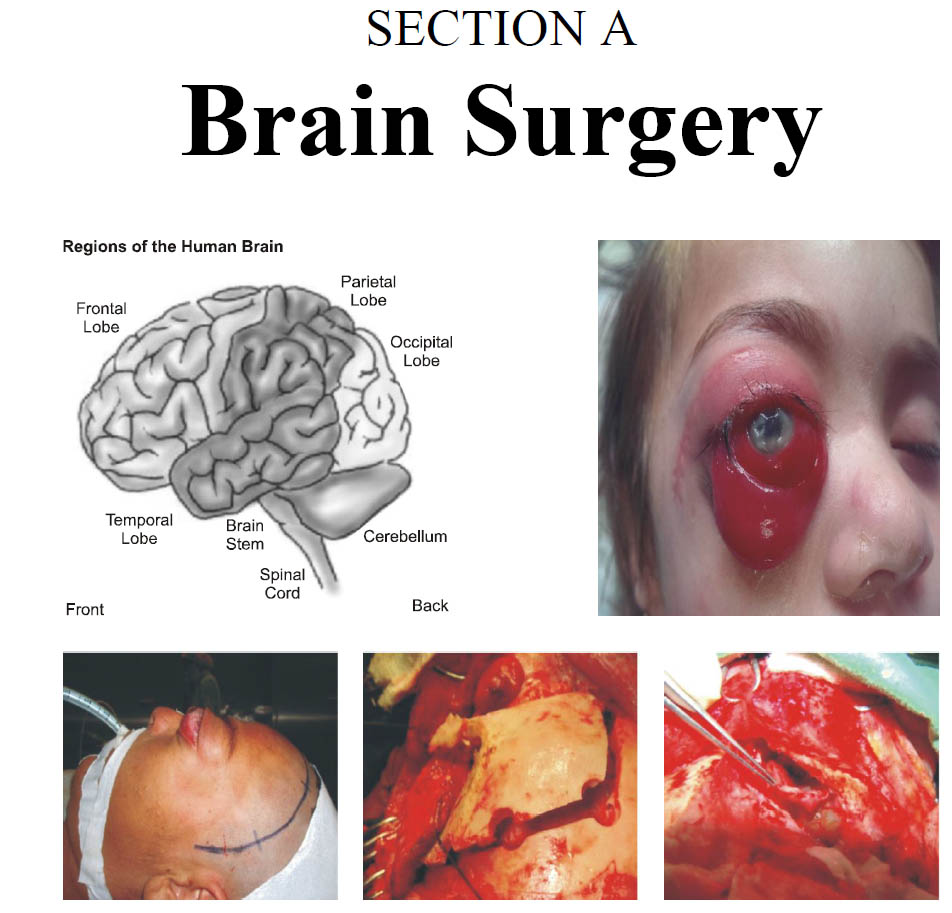Surgical Complications Following Removal of Cerebello-Pontine Angle (CP) Lesions
Keywords:
Omplications, cerebellopontine angle, tumor, post operativeAbstract
Objective: To know about the complications requiring surgical intervention, following removal of cerebellopontine angle lesions.
Materials and Methods: We retrospectively reviewed the series of patients who underwent CP angle tumor surgery at our department between January 2010 to May 2014. The patient age and sex along with the chief complaints as well as prior surgery in the form of ventriculoperitoneal shunt or endoscopic third ventriculostomy (ETV) were recorded on a designed proforma. The derived based immediate surgical complications considered were; Cerebrospinal fluid (CSF) leak, post operative Hydrocephalus (HCP) needing a Ventriculperitoneal (VP) shunt, post operative hematoma needing re-exploration and death.
Results: A total of fifty six (n= 56) patients were included in this study, with 24 males and 32 females. Age ranged from 3 years to 65 years with a mean age of 41 years, duration of symptoms was from 8 days to 12 years. The means hospital stay was from 8 to 33 days. Prior surgery was performed in 12 patients (21.3%) with 7 patients having a VP shunt and 5 patients having an Endoscopic third ventriculostomy (ETV). CSF leak was encounterdin (7.6%) a deterioration in facial nerve function in 3 (5.4%) patients requiring lateral torsoraphy. Five patients needed immediate re-do surgery with 3 (5.4%) having a VP shunt and 2 (3.6%) patients requiring a re-exploration for post-op hematoma.
Conclusions: The immediate surgical complications of the CP angle surgery are the formation of hematoma, development of hydrocephalus while early complications requiring surgery are CSF Leak and facial nerve palsy. Almost all of them require far or less a surgical intervention for management.
References
2. Schaller B. Cerebellopontine angle surgery. Part 1: General remarks. HNO. 2003; 51: 284–95.
3. Bonneville F, Sarrazin JL, Marsot-Dupuch K, et al. Unusual lesions of the cerebellopontine angle: a segmentalapproach. Radiographics, 2001; 21: 419–38.
4. Yamakawa K, Shitara N, Genka S, Manaka S, Takakura K. Clinical course and surgical prognosis of 33 cases of intracranial epidermoid tumors. Neurosurgery, 1989; 24: 568–73.
5. Lalwani AK. Meningioma, Epidermoids and other non acoustic tumors of the cerebellopontine angle. Otolaryn Clin North Amer. 1992; 25: 707-28.
6. Harner S G, Laws E R: Clinical fmdings in patients with acoustic neur Qmas. Mayo Clin Proc. 1983; 58: 7218.
7. Moller P.Acoustic Neuroma - Treatment Modalities: Surgery, gamma-knife or observation? 2000; 120 (543): 34-7.
8. Pollock B E. Lunsford L D, Flickinger J C, el al.: Veslibular schwannoma management. Pan I. Failed mjcrosurgery and the role of delayed stereotactic radiosurgery. J Neurosurg. 1998; 89: 944-8.
9. Nakamura M, Roser F, Dormiani M, Matthies C, Vorkapic P, Samii M. Facial and cochlear nerve function after surgery of cerebellopontine angle meningiomas. Neurosurg. 2005; 57 (1): 77-90.
10. Samii M, Gerganov V, Samii A. Improved preservation of hearing and facial nerve function in vestibular schwannoma surgery via the retrosigmoid approach in a series of 200 patients. J Neurosurg. 2005; 105: 527–35.
11. Matthies C. Functional Microsurgery of Vestibular Schwannomas in; Ramina R, Aguiar PHP, Tatagiba M. Samii’s essentials in Neurosurgery. Springer-Verlag Heidelberg 2008: p189-203.
12. Martuza RL. Suboccipital Retrosigmoid Surgical Approach for Vestibular Schwannoma (Acoustic Neuroma) in; Hinojosa AQ. Schmidek & Sweet operative neurosurgical techniques: indications, methods, and results. Elsevier Saunders, 2012.
13. Dandy WE. Results of removal of acoustic tumors by the unilateral approach. Arch Surg. 1941; 42: 1026–33.
14. Samii M, Matthies C. Management of 1000 vestibular schwannomas (acoustic neuromas): the facial nerve—preservation and restitution of function. Neurosurg. 1997; 40 (4): 684-94.
15. Greenberg MS. Handbook of Neurosurgery. 6th edition, New York, Theime Corp. 2006:

Downloads
Published
Issue
Section
License
The work published by PJNS is licensed under a Creative Commons Attribution-NonCommercial 4.0 International (CC BY-NC 4.0). Copyrights on any open access article published by Pakistan Journal of Neurological Surgery are retained by the author(s).












